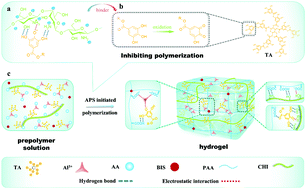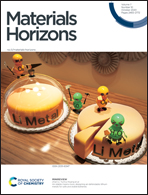Ctenophore-inspired hydrogels for efficient and repeatable underwater specific adhesion to biotic surfaces†
Abstract
Adhesive hydrogels hold great promise in multiple biomedical applications. However, there still exist practical challenges in underwater specific adhesion of hydrogels to biotic surfaces. Inspired by ctenophores, we develop an exquisite design of adhesive hydrogel based on polyacrylic acid (PAA), chitosan, tannic acid (TA) and Al3+, where the inhibition of a high amount TA on gelation is eliminated. This kind of hydrogel has high toughness and fast self-healable capability both in air and underwater. With the aid of electrostatic interactions and dynamic catechol chemistry, it is capable of achieving high-efficiency, specific and reversible underwater adhesion to multiple biological tissues like porcine skin, muscle, liver, intestines, and shrimp or crab shells, in diverse aqueous environments. Furthermore, the hydrogel with excellent biocompatibility and antibacterial ability is also suitable for tissue repair. This ctenophore-inspired work opens new avenues for designing and fabricating high-performance hydrogels with efficient specific underwater adhesiveness to diverse biomaterials.


 Please wait while we load your content...
Please wait while we load your content...